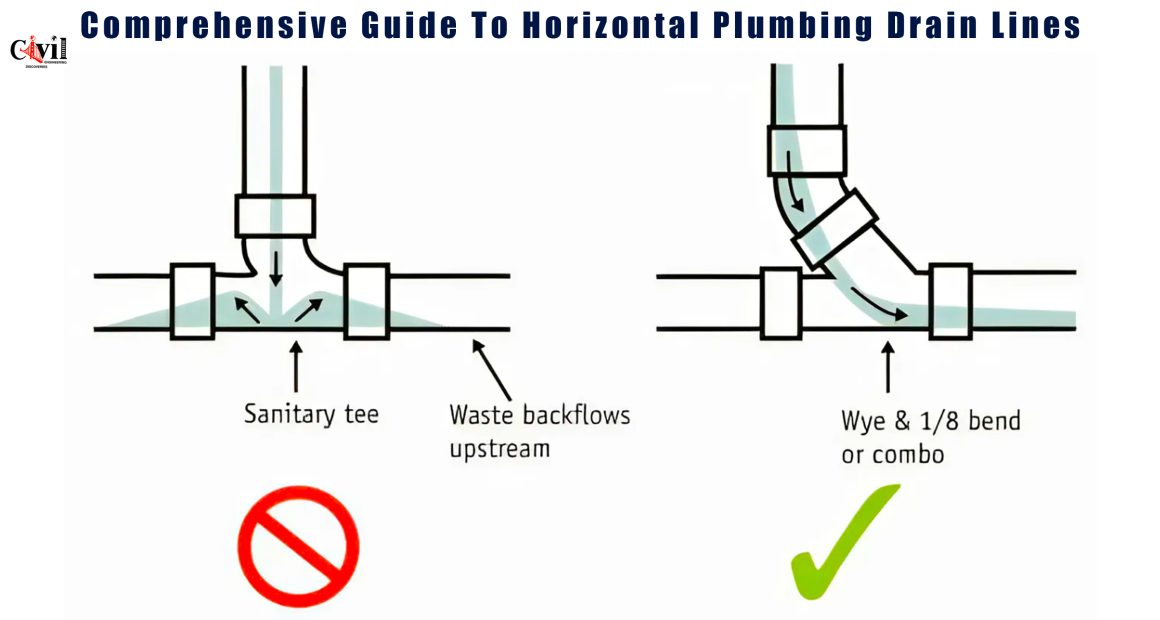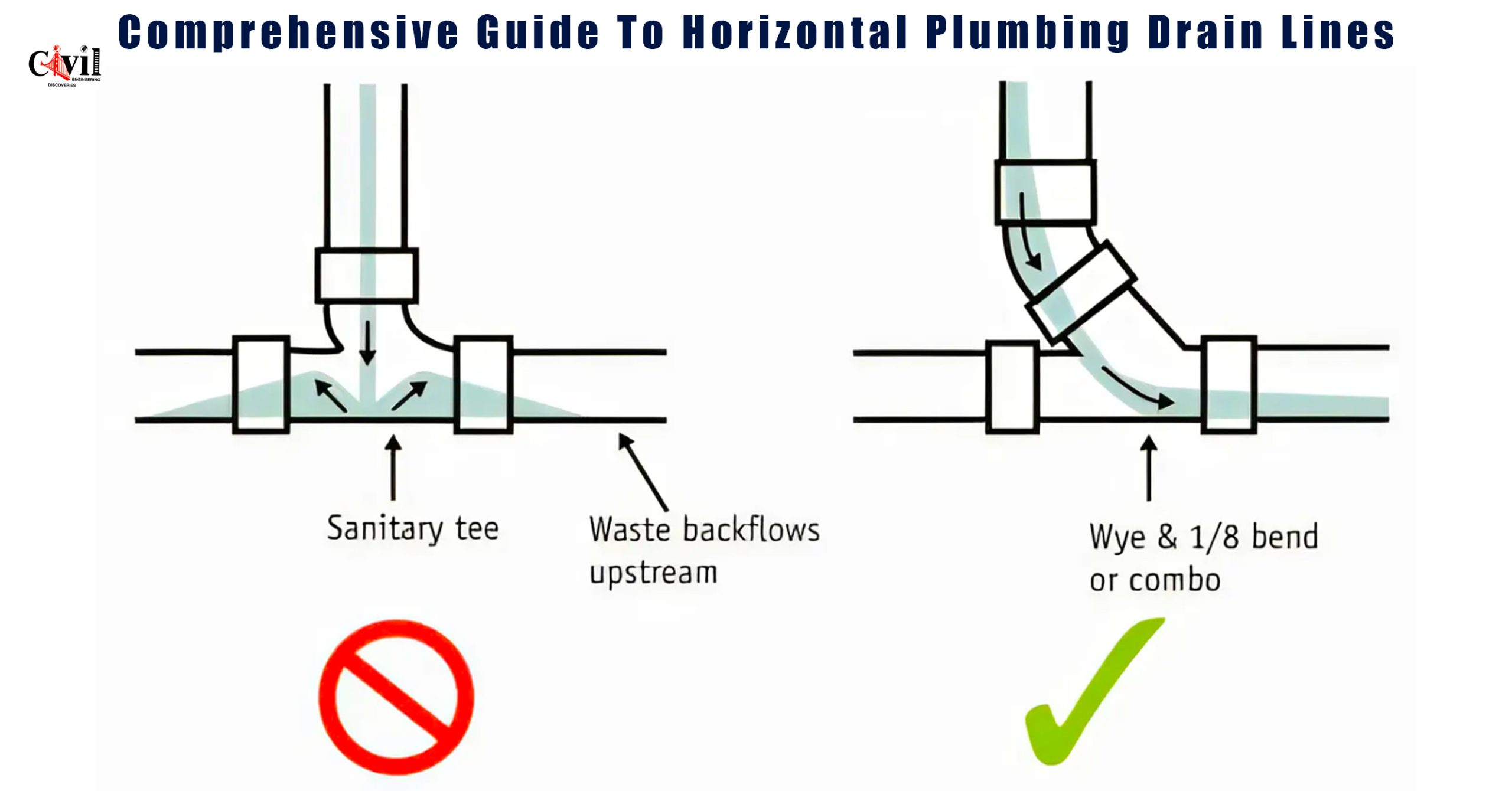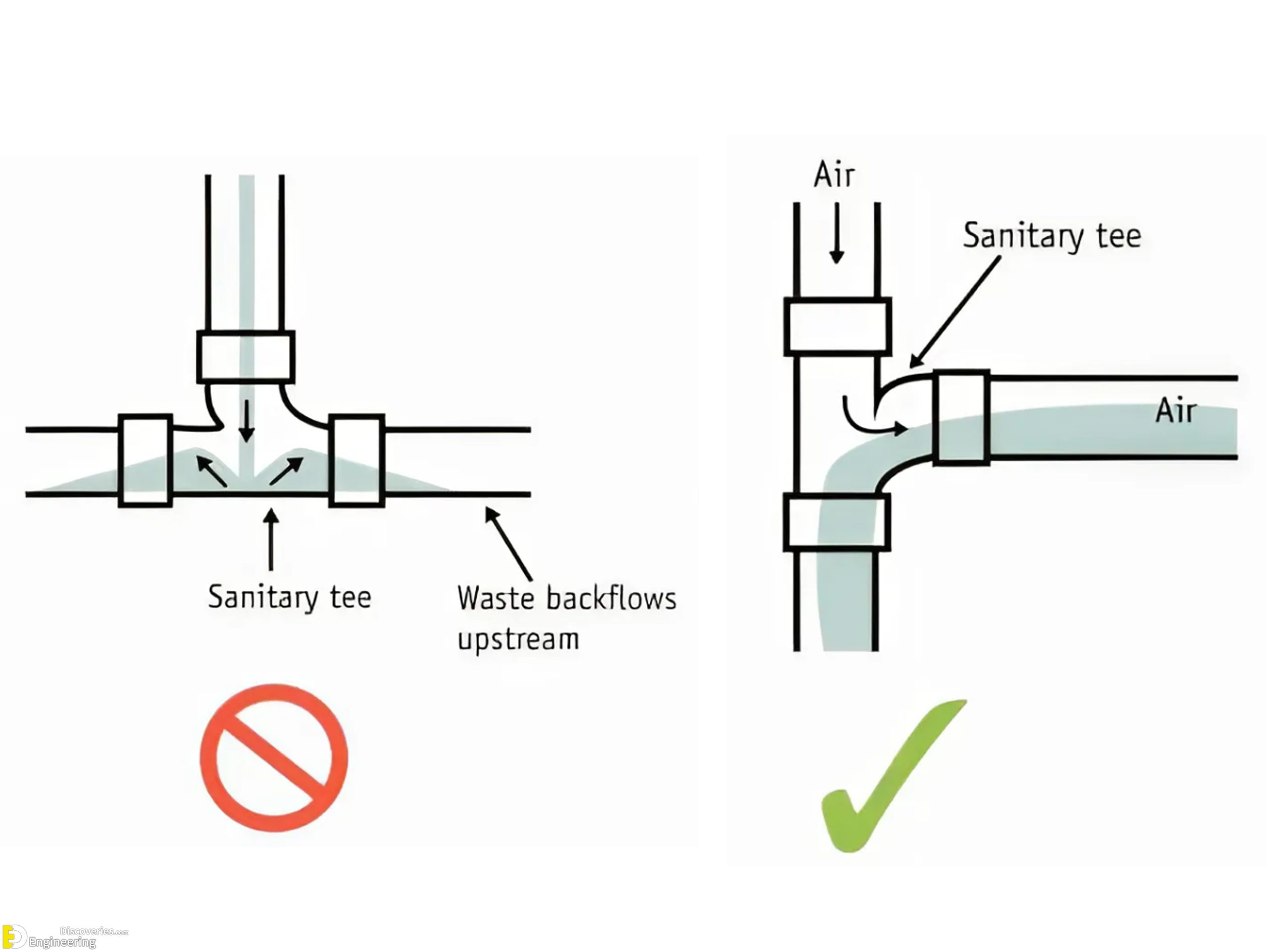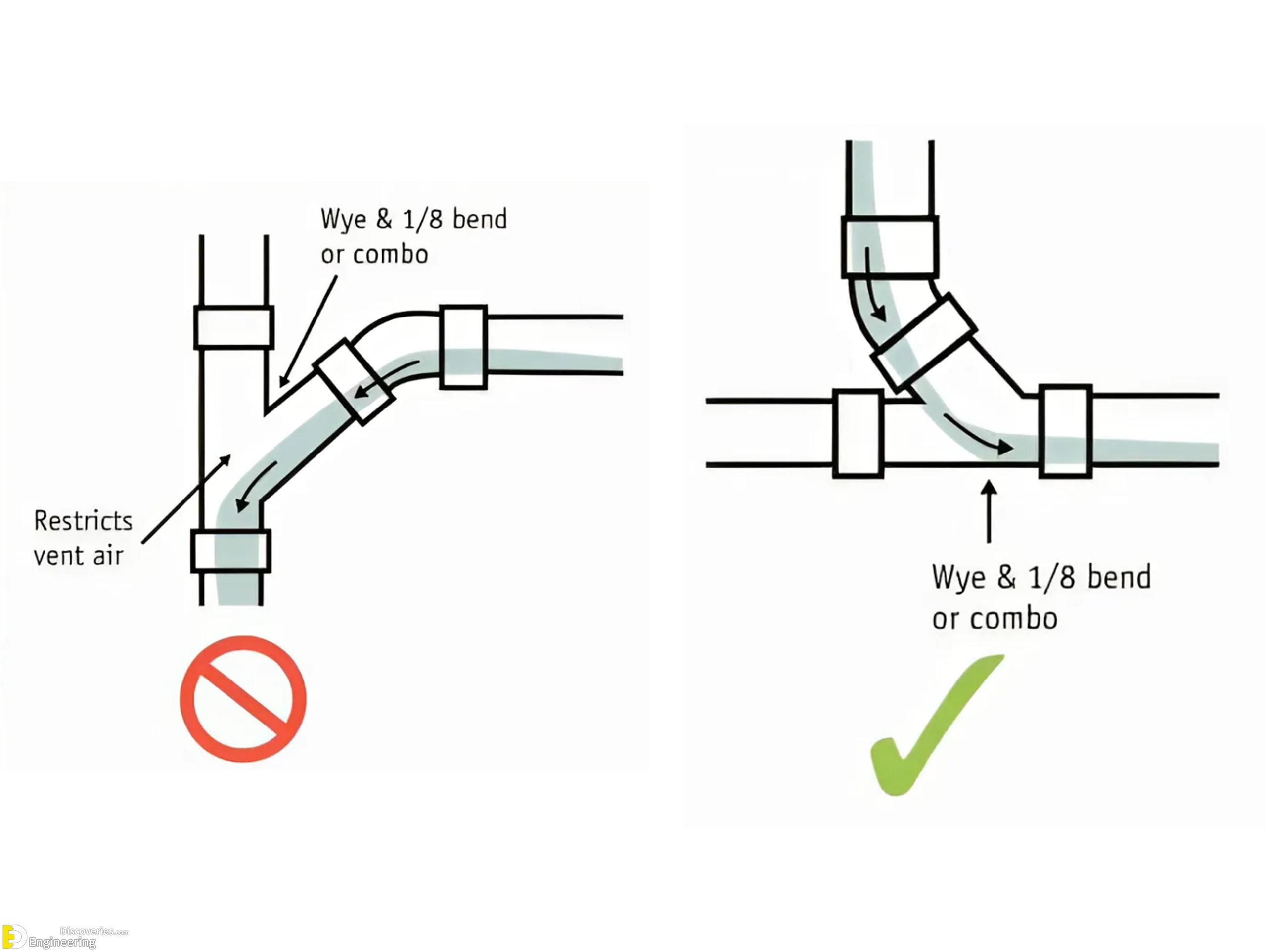Proper placement of tees, wyes, 1/8 bends, and combos in horizontal plumbing drain lines is critical for ensuring the system operates efficiently and complies with plumbing codes. Here’s a breakdown of how and where these fittings should be used:
1. Tees (T-Joints)
- Usage: Tees are typically used to connect a horizontal drain pipe to a vertical vent or to a smaller horizontal branch drain.
- Placement:
- A sanitary tee can only be used in a vertical orientation (e.g., connecting a horizontal drain to a vertical stack).
- Never use a tee to connect horizontal pipes as it can cause blockages.
- Key Tip: Ensure the tee’s sweep is in the direction of flow to reduce resistance and prevent clogs.
2. Wyes (Y-Joints)
- Usage: Wyes are used to connect a branch line to a main horizontal drain line at a 45-degree angle, which helps maintain smooth flow.
- Placement:
- Ideal for connecting horizontal to horizontal or horizontal to vertical pipes.
- Use for cleanout access points as well, ensuring easy maintenance.
- Key Tip: The 45-degree entry of a wye fitting promotes better drainage by reducing turbulence in the flow.
3. 1/8 Bend (45-Degree Elbow)
- Usage: The 1/8 bend is often used to change the direction of a drain line by 45 degrees.
- Placement:
- Use to make gentle directional changes in horizontal drain lines to avoid sharp angles that could slow down the flow or cause clogging.
- It can also help navigate around obstacles in the building structure.
- Key Tip: Avoid using 90-degree bends in horizontal runs; opt for two 45-degree bends (1/8 bends) instead to reduce the chances of clogs.
4. Combos (Combination Wye and 1/8 Bend)
- Usage: Combos are used when you need to combine the benefits of a wye and a 1/8 bend, allowing a smoother transition from one pipe into another at a 45-degree angle.
- Placement:
- Typically used in horizontal drain lines where a branch connection at a 45-degree angle is needed, ensuring a smooth flow transition.
- Key Tip: Combos are excellent for minimizing resistance and turbulence in the flow, making them preferable over sanitary tees in horizontal lines.
General Tips
- Slope: Ensure all horizontal drain lines are sloped at a minimum of 1/4 inch per foot for pipes up to 3 inches in diameter. This ensures gravity can effectively move waste and water through the system.
- Cleanouts: Install cleanouts at key points in your drain system, such as at the base of vertical stacks and every change of direction exceeding 135 degrees.
- Code Compliance: Always refer to local plumbing codes for specific requirements, as they may vary by location.
Subscribe
Login
0 Comments
Newest








